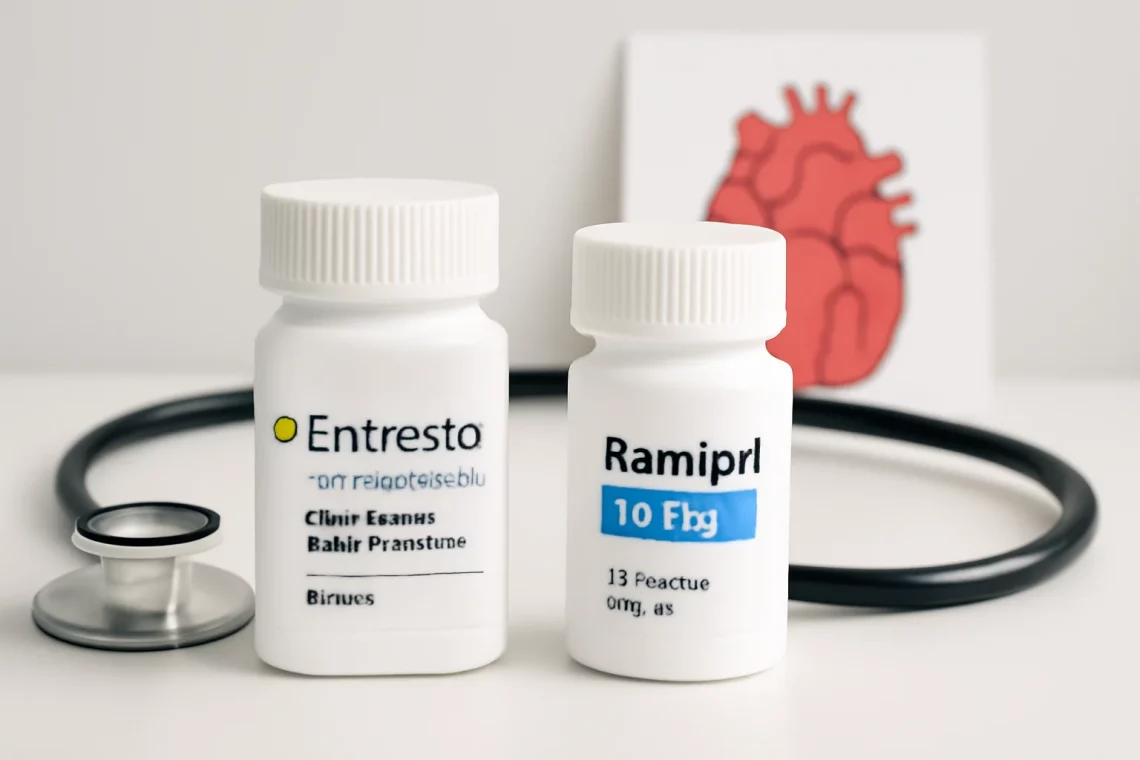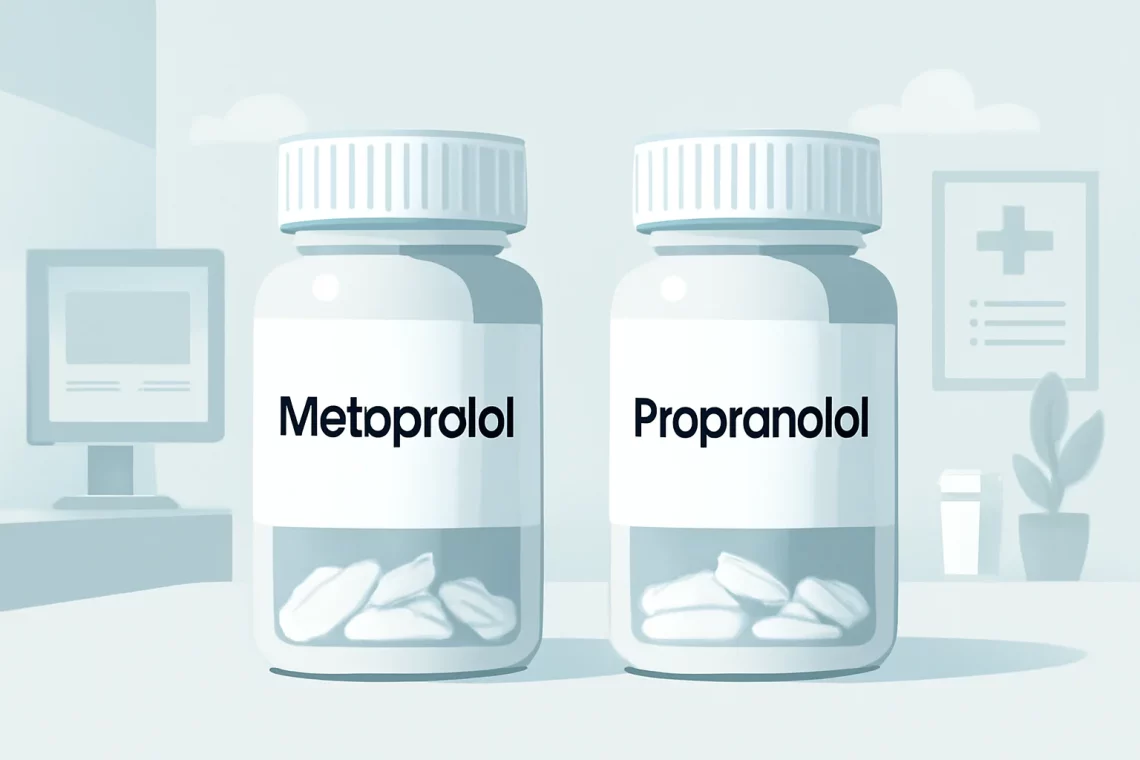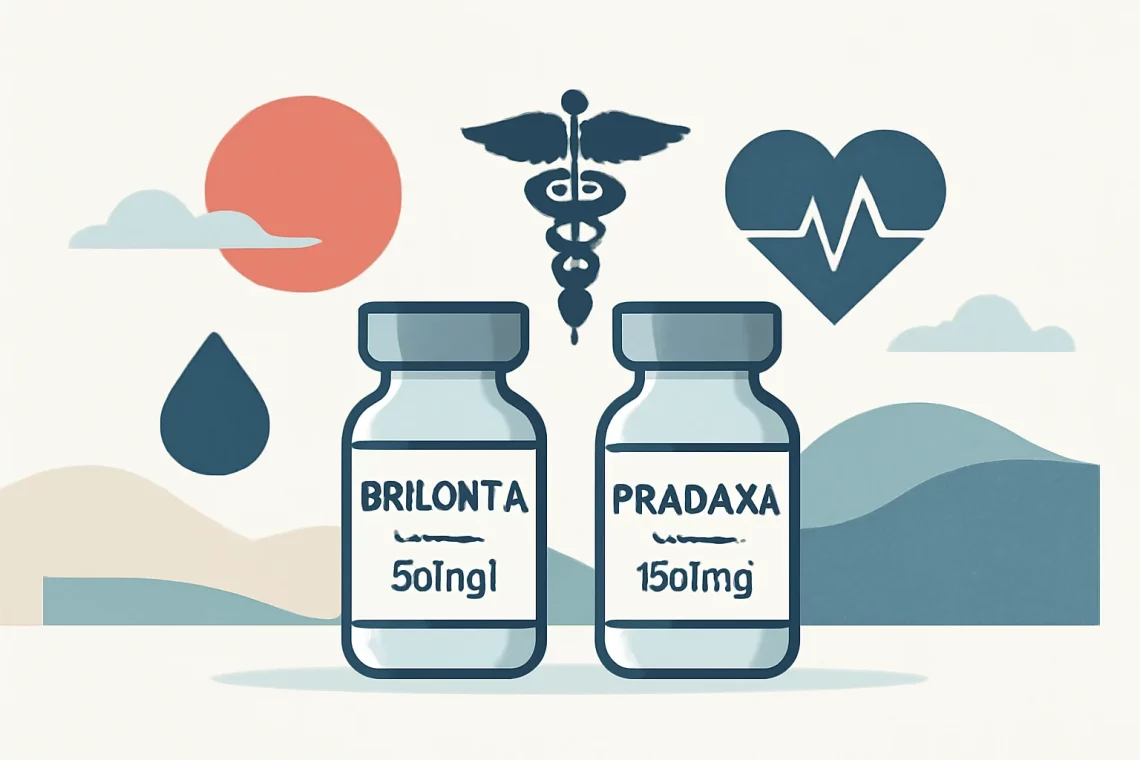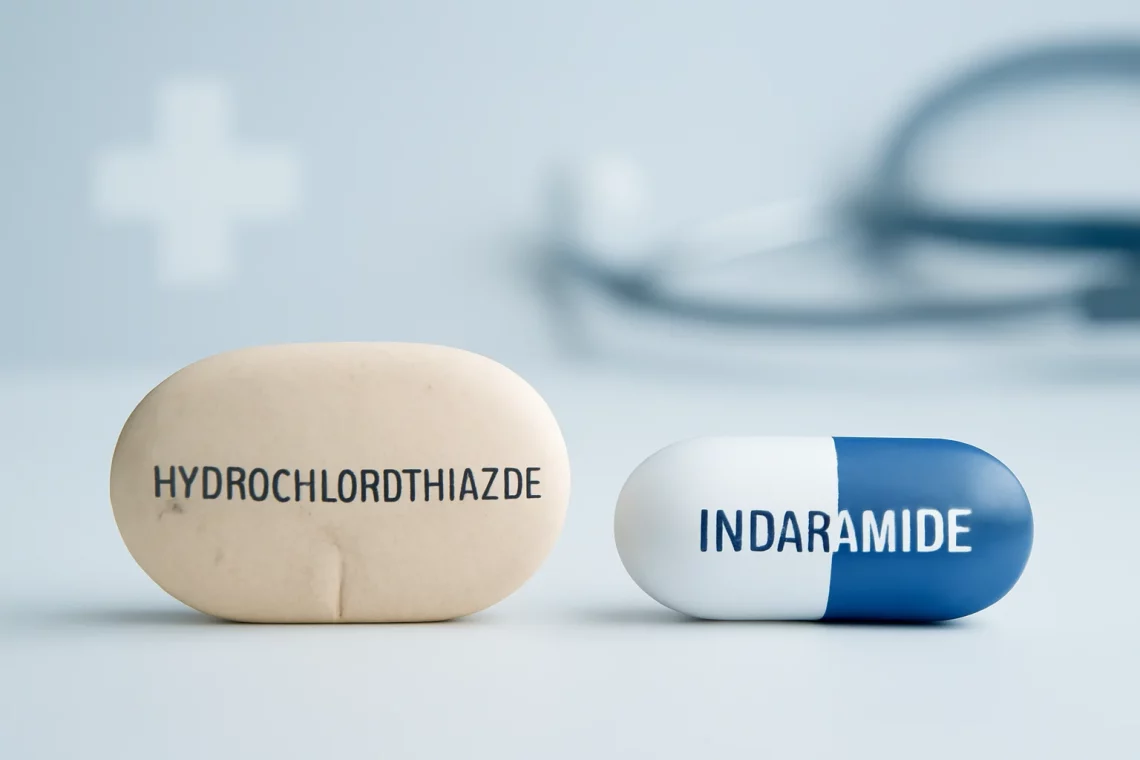-
Metoprolol vs Bisoprolol: Key Differences and Similarities Explained
Metoprolol and bisoprolol are two commonly prescribed medications that belong to the class of drugs known as beta-blockers. These medications are primarily used to manage cardiovascular conditions, including hypertension (high blood pressure), heart failure, and certain types of arrhythmias (irregular heartbeats). Beta-blockers work by blocking the effects of adrenaline on the heart, which helps to reduce heart rate and lower blood pressure. In recent years, there has been significant discussion among healthcare providers and patients regarding the differences and similarities between metoprolol and bisoprolol. Both medications have proven effective, but they do have distinct characteristics, mechanisms of action, and side effect profiles that may influence the choice of one over…
-
Entresto vs Ramipril: Which Heart Failure Treatment is Better?
Heart disease remains one of the leading causes of morbidity and mortality worldwide. As healthcare continues to evolve, so do the treatment options available to patients struggling with cardiovascular issues. Among the various medications prescribed, Entresto and Ramipril have emerged as two prominent choices for managing heart failure and hypertension. Both medications serve critical roles in treating cardiovascular conditions, yet they operate through different mechanisms and offer distinct benefits and potential side effects. Understanding the nuances between these two drugs is essential for patients and healthcare providers alike. Each medication has its unique composition, dosing strategies, and indications, making it vital to grasp how they compare in effectiveness and safety.…
-
Metoprolol vs Propranolol: Key Differences and Uses Explained
Metoprolol and propranolol are two widely prescribed medications belonging to the class of drugs known as beta-blockers. These medications are primarily used to manage various cardiovascular conditions, such as hypertension, angina, and arrhythmias. However, their mechanisms of action, therapeutic applications, and side effect profiles differ significantly, making them suitable for different patient needs. Understanding these differences is crucial for both healthcare professionals and patients, as it can influence treatment efficacy and safety. Beta-blockers work by blocking the effects of adrenaline on beta-adrenergic receptors, leading to a decrease in heart rate and blood pressure. This class of drugs is beneficial not only for heart-related issues but also for other conditions such…
-
Brilinta vs Pradaxa: A Comprehensive Comparison of Anticoagulants
Brilinta and Pradaxa are two widely used medications that play crucial roles in managing different cardiovascular conditions. With the increasing prevalence of heart diseases, the need for effective treatments is more significant than ever. Both Brilinta (ticagrelor) and Pradaxa (dabigatran) offer unique mechanisms of action and indications, making them valuable options in clinical practice. Brilinta is primarily an antiplatelet agent, utilized to prevent blood clots in patients with acute coronary syndrome or those who have had a heart attack. Its ability to inhibit platelet aggregation helps reduce the risk of subsequent cardiovascular events. On the other hand, Pradaxa is an anticoagulant that works by directly inhibiting thrombin, a key enzyme…
-
Labetalol vs Methyldopa: Which is Better for Managing Hypertension?
Hypertension, commonly known as high blood pressure, is a significant global health concern that affects millions of individuals. It is often dubbed the “silent killer” due to its asymptomatic nature, which can lead to severe complications if left untreated. Effective management of hypertension is crucial to prevent cardiovascular diseases, stroke, and other life-threatening conditions. Among the various classes of antihypertensive medications available, labetalol and methyldopa have gained attention for their unique properties and applications in treating high blood pressure, particularly in specific populations such as pregnant women. Labetalol, a combined alpha and beta-blocker, has been widely used due to its dual mechanism of action, which effectively lowers blood pressure by…
-
Losartan vs Valsartan: Choosing the Right Medication for Hypertension
Losartan and Valsartan are two commonly prescribed medications that belong to a class of drugs known as angiotensin receptor blockers (ARBs). These medications are primarily used to manage hypertension and heart failure, providing significant benefits for those affected by these conditions. With rising rates of cardiovascular diseases globally, understanding the role and differences between these medications is increasingly important for patients and healthcare providers alike. Both Losartan and Valsartan function by blocking the action of a hormone called angiotensin II, which causes blood vessels to constrict. This action leads to lower blood pressure and reduced workload on the heart. Despite their similar mechanisms, there are nuances in their pharmacological profiles,…
-
Entresto vs Enalapril: Which Heart Failure Treatment Is Right for You?
Heart disease remains one of the leading causes of mortality worldwide, making effective treatment options more crucial than ever. Among the most commonly prescribed medications for heart failure are Entresto and Enalapril. Both of these drugs serve to improve heart function and alleviate symptoms associated with heart failure, but they do so through different mechanisms and active ingredients. Understanding the differences between these two medications can empower patients and caregivers to make informed choices regarding heart health. Entresto is a combination drug that includes sacubitril and valsartan, while Enalapril belongs to the class of drugs known as ACE inhibitors. Each medication has its unique benefits and side effects, and the…
-
Metoprolol vs Atenolol: Key Differences and Similarities Explained
Metoprolol and atenolol are two widely prescribed medications belonging to a class of drugs known as beta-blockers. These medications are primarily used to manage cardiovascular conditions, including hypertension, heart failure, and certain types of arrhythmias. Both metoprolol and atenolol function by blocking the effects of adrenaline on the heart and blood vessels, leading to a decrease in heart rate and blood pressure. This mechanism of action makes them effective in reducing the workload on the heart and improving overall cardiovascular health. The choice between metoprolol and atenolol can depend on various factors, including the specific health condition being treated, patient response to medication, and potential side effects. While both drugs…
-
Valsartan vs Losartan: Which Blood Pressure Medication is Right for You?
Valsartan and Losartan are two well-known medications primarily used to treat high blood pressure and other cardiovascular conditions. Both belong to a class of drugs called angiotensin II receptor antagonists, which work by blocking the action of a hormone that can cause blood vessels to constrict. This leads to a decrease in blood pressure and an overall improvement in heart health. While both medications share similar mechanisms and therapeutic benefits, they also possess distinct characteristics and differences that can influence a healthcare provider’s decision when prescribing them. As heart disease remains a leading cause of morbidity and mortality worldwide, understanding the nuances of such medications is crucial. Patients often find…
-
Hydrochlorothiazide vs Indapamide: Key Differences Explained
High blood pressure, also known as hypertension, is a prevalent health condition affecting millions of individuals worldwide. Often dubbed the “silent killer,” hypertension can lead to serious health complications if not managed properly. As such, effective management of blood pressure is crucial for maintaining overall health and preventing associated risks such as heart disease, stroke, and kidney problems. Among the various treatment options available, both hydrochlorothiazide and indapamide stand out as commonly prescribed diuretics. These medications play a significant role in helping patients regulate their blood pressure levels while also contributing to fluid balance in the body. Understanding the differences and similarities between hydrochlorothiazide and indapamide can be vital for…





































